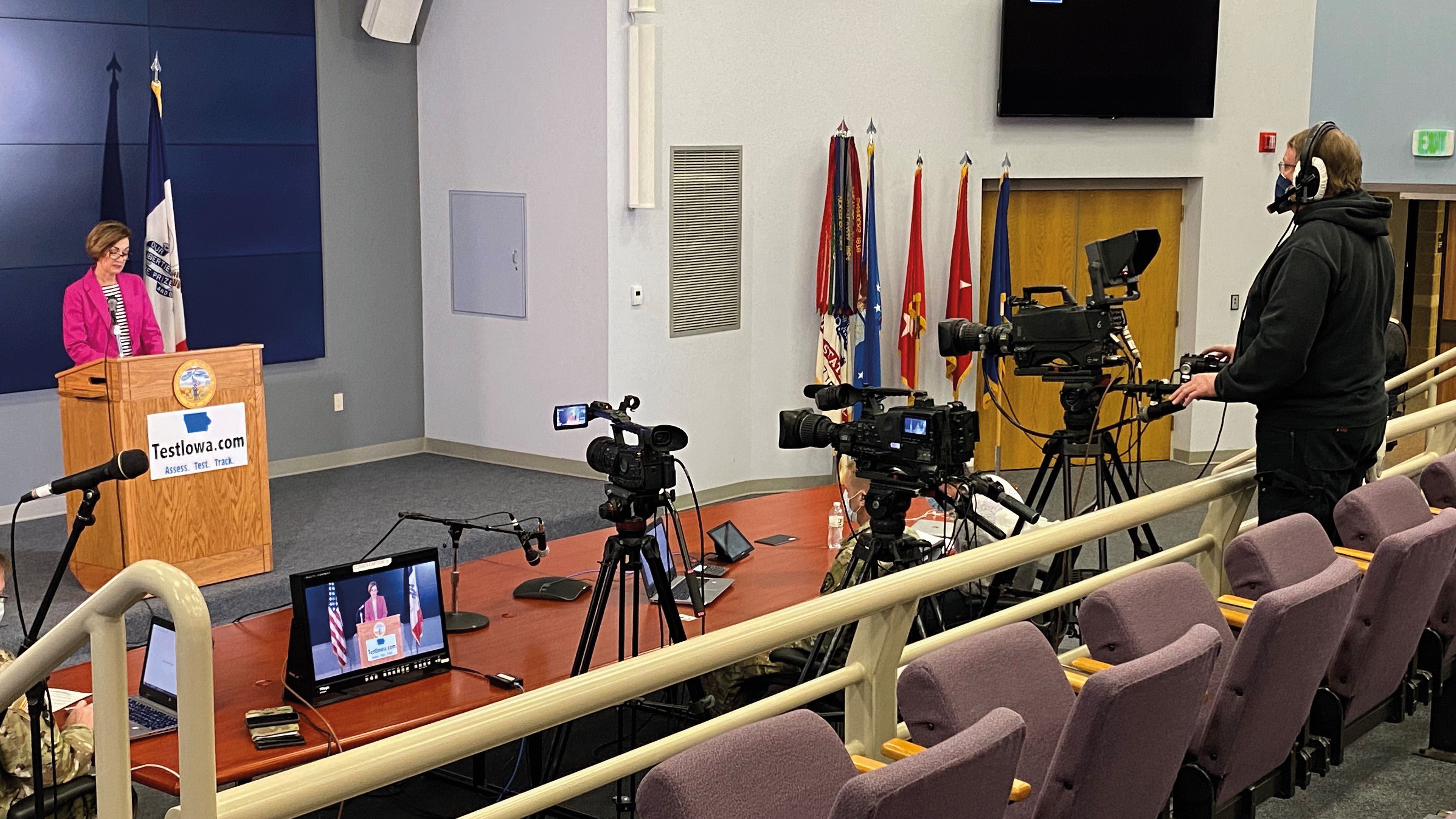Remotely Speaking
How has a year of production from (insert locale here) impacted local TV?

JOHNSTON, Iowa—It is not news to anyone, anywhere that Covid-19 and the associated pandemic and global shutdown has forced changes on everyone. Even now as we start to see some lessening of restrictions and resumption of a less restrictive return to work, we are beginning to evaluate what are the impacts of the last year and half in the near and long term. How many of the changes we were forced to implement will continue after the pandemic has ended? Even more interesting to me is what will motivate keeping or eliminating the changes when we can go back to a relatively speaking "more normal" way of life?
When it became obvious in the early days of March 2020 that Iowa PBS would have to look at implementing a remote work policy, we had to pivot, which isn’t easy for my organization since we are an agency of the State of Iowa and governmental policies and procedures tend to make flexibility and nimbleness a challenge.
HYBRID OPERATION
We were challenged on a couple of fronts. First being that much of the staff is hourly and as a result are expected to work from their desks within the facility for set shifts. Enabling even clerical and traditional office workers to work from home meant not only supplying them with laptops and VPN access but also with meaningful work that demonstrated they were actually working their shifts.
The other challenge was for those involved in content creation where they would need to interface from a remote location into a facility that was purposely built to not connect to the outside world. Providing VPN access to Avid edit suites and broadcast operations required a bit more thought and planning. The Iowa PBS IT team did an amazing job ramping up remote access capabilities and configuring remote work stations.
What we ended up with was a hybrid operation where the majority of the staff could work remotely, and a limited number of essential workers still went into the office. We implemented a sanitization routine that was highly successful when you consider that when the crisis began, we were tasked to be the pool feed for our Governor’s press conferences, which started out at three a week from a remote secured location and have settled into weekly from our studio facility.
In addition, we continued studio production of "Iowa Press," our weekly news program and “Market to Market,” our weekly syndicated agriculture program. While there were a couple of individual cases of Covid reported, no wide outbreaks thanks in no small part to our thoughtful staff and thorough sanitization.
FAIR GAME
One of the most impressive accomplishments was in August when in normal years we would have had an all-out commitment to blanket-covering events at the Iowa State Fair. Now I know for many, a state fair may seem to be pretty trivial but Iowa PBS has been covering the Iowa State Fair for 50 years and creating a nightly show that often generates higher ratings than the commercial network affiliates.
While we aren’t motivated by ratings, this is a pretty good indicator that the audience likes the content. When the State Fair had to cancel, we decided to produce a myriad of retrospective pieces going back through our archive of past State Fair coverage. These pieces were produced primarily by editors working on laptops from their homes connected to Avid machines at the broadcast facility. They not only continued our long-term commitment to highlighting the Iowa State Fair but they also kept the people of Iowa and around the country connected to what is an immensely popular annual event.
Looking forward, I find myself less concerned about the technology needed to enable a change to a "work from anywhere" mindset. I personally have had that capability for as long as I have been at Iowa PBS. It is one of the key factors that has enabled my participation in leadership at the IEEE Broadcast Technology Society, the Society of Motion Picture and Television Engineers, the NAB Show, ATSC and the IBC. My primary computer has been a laptop and I have done my Iowa PBS work from all over the world.
The commoditization of bandwidth, the virtualization of software-based systems and the power of computing have all worked toward an environment where even the most visually intensive production can be done by disparate people working from multiple locations. I have encouraged many of my colleagues and friends to review the Movie Labs 2030 Vision Initiative white paper as a way of expanding their thinking. While I do not see myself involved in the production of cinema releases, I am definitely inspired by the global creative community that this vision enables. And who knows, with the challenges faced and lessons learned by the major film producers, their world and ours may be aligning much faster than we ever thought.
WHAT THE FUTURE HOLDS
My concern as I see the light at the end of this tunnel is the potential for overreacting or underreacting to the changed environment. The pandemic has forced many employers to accept that their employees can work from anywhere and not just in their cubicle in the office complex or the edit suite at the station. This can require that we value people’s worth within an organization not solely or primarily on the number of hours they spend in the edifice that has the company logo at the roof line but on what they contribute to the mission and goals of the organization.
The same pandemic has allowed many people to more seamlessly blend their home life and work life together. We have all been in a virtual meeting where one of our colleagues has had to explain a toddler asking a question or a cat walking across the keyboard. We as employees have to remember to keep some separation between the two and we as employers have to remember to tolerate the occasional collision of the two.
Finally, while necessity—the mother of invention—has proven that we can work virtually, there is still a valid need for going to the office and interacting with our colleagues and coworkers. We must remember that we are a social species and just like social networking is no substitute for real networking, a virtual presence is only an augmentation to reality, it is not a substitute for reality.
Bill Hayes is the director of engineering and technology at Iowa Public Television and a recipient of Future's 2021 Tech Leadership Award.
Get the TV Tech Newsletter
The professional video industry's #1 source for news, trends and product and tech information. Sign up below.
Bill Hayes is the former director of engineering and technology for Iowa PBS and has been at the forefront of broadcast TV technology for more than 40 years. He’s a former president of IEEE’s Broadcast Technology Society, is a Partnership Board Member of the International Broadcasting Convention (IBC) and has contributed extensively to SMPTE and ATSC. He is a recipient of Future's 2021 Tech Leadership Award and SMPTE Fellow.

